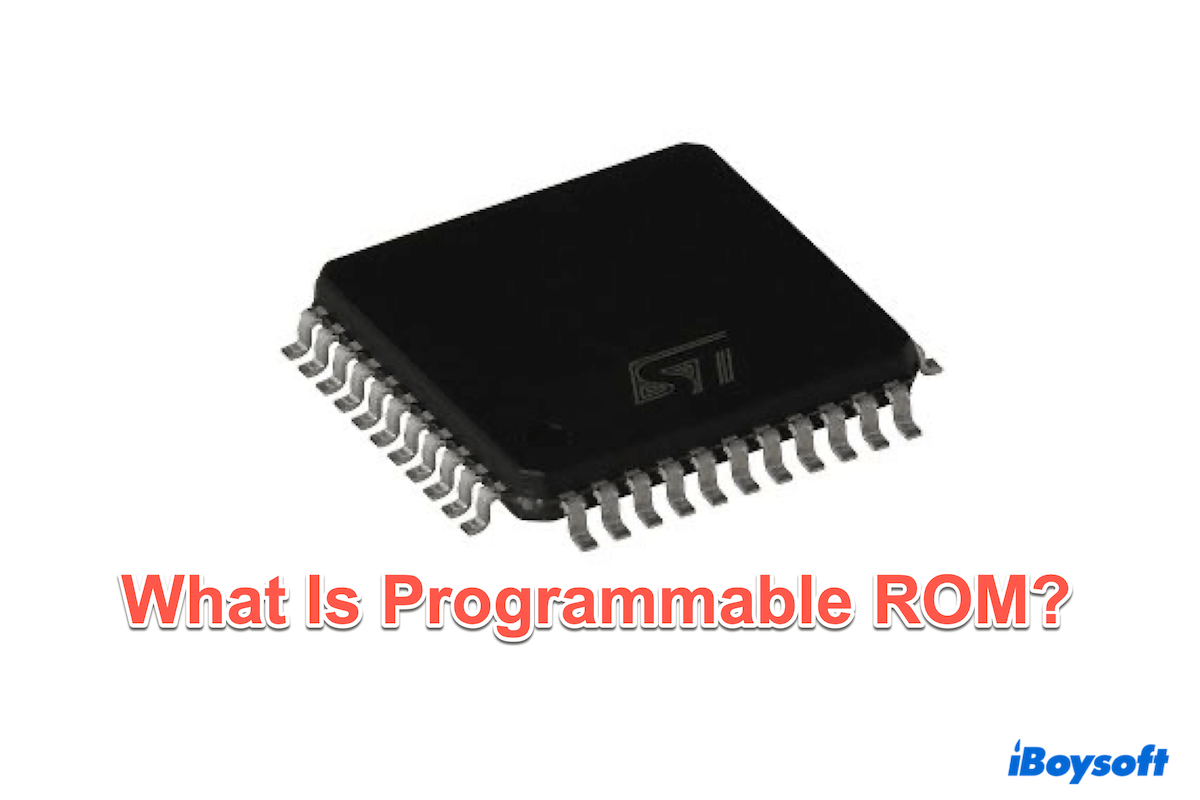Programmable Read-Only Memory (PROM) is a type of non-volatile memory used in digital devices to store data that remains intact even when the device is powered off. Unlike ROM, which comes pre-programmed by the manufacturer, PROM allows users or developers to write data into the memory after manufacturing.
Once written, the data in PROM cannot be modified, making it a reliable option for permanent data storage in many applications. PROM plays a crucial role in the development of embedded systems, hardware configurations, and firmware storage.
Features and uses of Programmable ROM
Programmable ROM offers several key features that distinguish it from other types of memory. As a non-volatile memory, PROM retains its data without a constant power supply, ensuring that critical information remains secure and accessible over time.
One of its main features is its "one-time programmable" nature, meaning that once data is written to a PROM chip, it cannot be erased or reprogrammed.
In terms of usage, programmable read-only memory is typically used in situations where permanent storage is required. It is commonly found in:
- Embedded systems: Where specific firmware or control code needs to be permanently stored.
- Hardware configurations: Such as configuring settings in devices like printers or networking hardware.
- Consumer electronics: PROM can store essential firmware or operational code in devices like gaming consoles and calculators.
How does Programmable ROM work
PROM is designed with a matrix of fuses that represent bits of data. When it is first manufactured, every bit in the memory is set to a default state (typically 1). Programming the memory involves selectively burning certain fuses to change their state from 1 to 0. This process is achieved using a specialized programmer device, and once a fuse is blown, its state cannot be reversed.
Because the programming process is destructive to the fuse, the changes are permanent, and the chip cannot be rewritten or erased. This makes programmable read-only memory ideal for scenarios where data only needs to be programmed once, and further changes are unnecessary or undesirable.
Advantages and disadvantages of Programmable ROM
While it's used commonly in our lives, there are still some drawbacks you should learn. Let's see the table below:
| Strength | Weakness |
| Reliability and durability: Once programmed, the data in PROM remains permanently stored and cannot be altered or erased by accidental overwrites or power loss. | Lack of Flexibility: The inability to reprogram or modify data once written can be a drawback, especially in systems where updates or changes to the stored data may be required. |
| Cost-Effective: PROM chips are generally less expensive than reprogrammable memory types like EEPROM, making them a cost-effective solution for permanent data storage. | Programming Complexity: The process of programming PROM requires specialized hardware, and any mistake during programming renders the chip unusable, which can result in wasted materials. |
If you think this is helpful, please share it with more people.
The differences between PROM, RAM, EPROM, and Flash Memory
Below is a table comparing PROM, RAM, EPROM, and Flash Memory based on various factors, you can take it as a reference:

| Feature | PROM | RAM | EPROM | Flash Memory |
| Volatility | Non-volatile | Volatile | Non-volatile | Non-volatile |
| Erase Capability | Cannot be erased | Data is lost when powered off | Can be erased and reprogrammed | Can be erased and reprogrammed easily |
| Speed | Slow | Fast | Slow than RAM | Faster than EPROM but slower than RAM |
| Flexibility | None (data is fixed after programming) | High(constant read/write access) | Limited(requires UV light to earse) | High(electrically earsable) |
| Data Access | Sequential | Random | Sequential | Random |
This table summarizes the major distinctions between each memory type, highlighting the unique features and typical use cases for each.
Conclusion
Programmable ROM is a vital memory type in modern computing, providing permanent data storage for systems where information must be preserved reliably. While it lacks the flexibility of reprogrammable memory types like Flash and EPROM, PROM's simplicity, durability, and cost-effectiveness make it an excellent choice for many applications, particularly in embedded systems and consumer electronics.
If you like this post, why not share?
